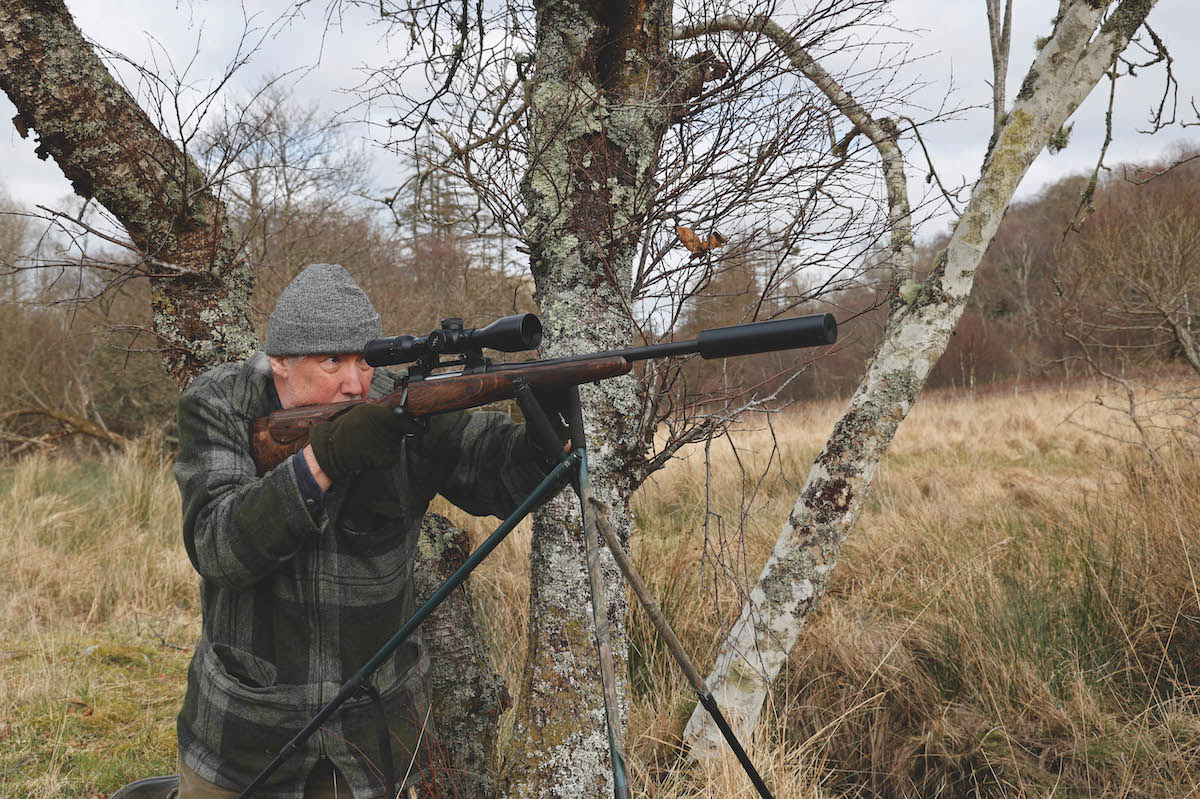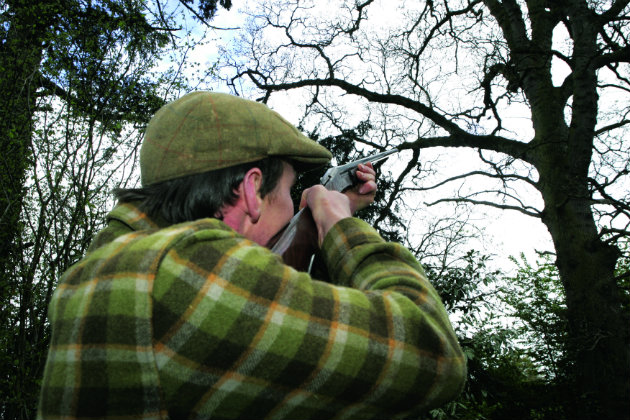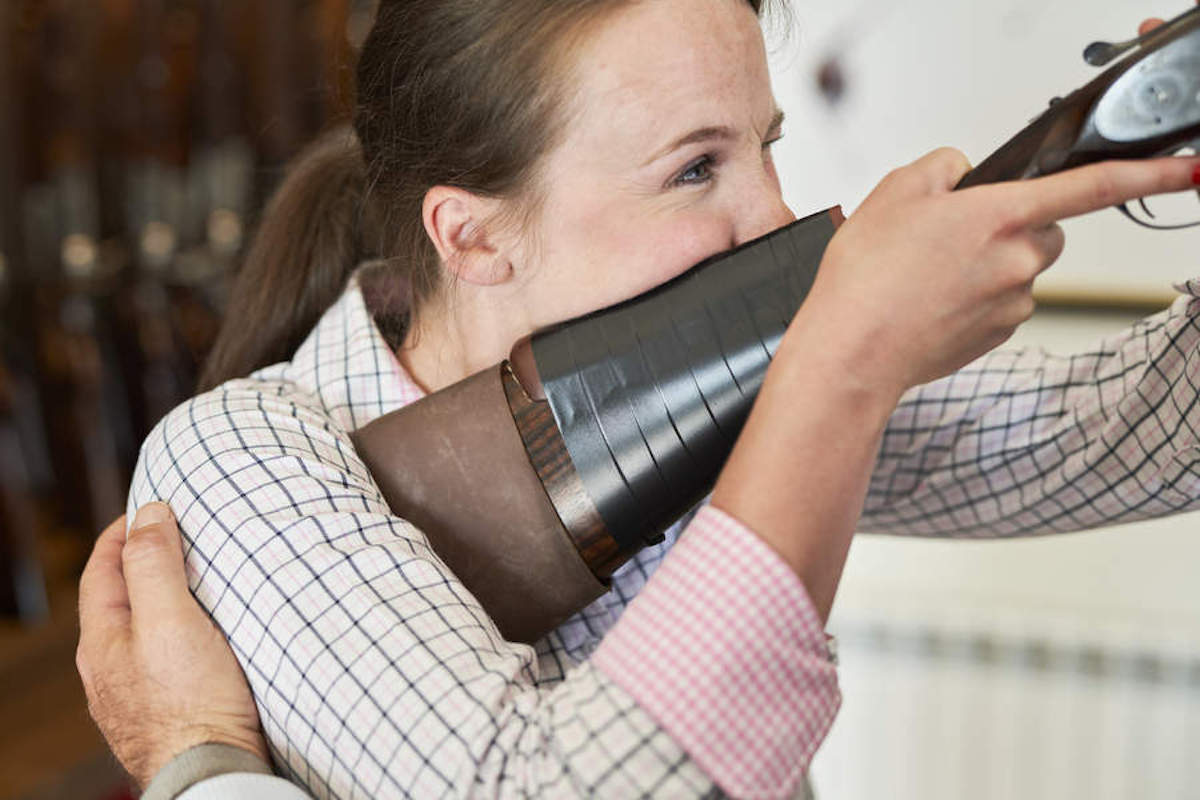How to photograph your gundog like a pro
Capturing the perfect image of your working dog out in the field isn't always easy but professional photographers have some tricks up their sleeve to make sure they get the best shot. Here expert Andy Biggar tells you what you need to know

Understanding your subject can lead to beautiful, natural-looking images
Important family members
Having grown up with dogs, we understand they are important family members that have a special place in our hearts. Sadly, dogs are not eternal, so the photographs we take will one day bring great comfort to owners and hopefully create permanent happy memories.

Shooting on our farm allows us to use natural framing devices such as these wood planks
Capture the dog’s true character
Dog photography has changed a great deal over the past few years. Instead of action shots of dogs running or jumping agility fences, owners now tend to want stunning portraits of their dogs to hang proudly in their homes.
The dog’s safety during a photo shoot is the most important consideration. No picture is worth putting the dog at risk for. Not all dogs are safe to be allowed off lead – if you were to choose a location next to a busy road, and allow such a dog off lead, the consequences could be unthinkable. Choose a quiet location away from busy roads and other dog walkers, if possible, to ensure a relaxed environment.
If it’s safer for the dog to remain on lead at all times, don’t worry, as the lead can always be edited out later in Photoshop.
Limited attention span
All dogs have a limited attention span when it comes to sitting still for portraits, so it’s important to capture portraits at the start of the session. Once the dogs have been running around chasing balls, they will be out of breath and panting with their tongues hanging out, which isn’t as photogenic.
Always make sure you are ready to shoot, as you never know when an opportunity will present itself. Dogs are always moving and it’s heartbreaking if you have the perfect shot lined up but your camera isn’t ready to go.

Using a wide aperture (in this case f/4) helps to soften an otherwise distracting background
As a rule, aperture priority is my preferred shooting mode – it gives me enough flexibility to be creative but allows me to respond quickly to changing light conditions and different colours of dogs. If you are shooting on aperture priority, however, do check regularly that your shutter speed hasn’t fallen too low – that way you will avoid blurry shots and the details will be super-sharp.
How to get a running/action shot.
Throw a ball or dummy straight ahead. As the dog comes running back, you will get your shot.

Dogs have a limited attention span when it comes to sitting for portraits, so shoot these first
When it comes to focusing, eyes aren’t only the gateway to the soul – they are also a means of communicating emotion such as fear or love. As in human portraiture, the dog’s eyes should always be as sharp as possible in both portrait and action shots. In order to achieve this sharpness, I would recommend using a single focus point on your camera so that you can accurately decide where the main focus will be. I see a lot of images where the nose is in focus but the eyes are not. This can be a quirky look, but as a rule it’s the eyes that should always be sharp.
It’s a good idea to get to grips with your camera controls and be able to move the AF point around quickly before you arrange a session, as dogs very rarely sit in the same position for long.
Keeping everything sharp

Capturing a dog mid-air is never easy, and there’s always an element of luck to it. To improve your chances of success, set your focus points first, positioning them where you think the dog’s head will be when you release the shutter. Instead of using a single focus point, expand the focus area – a small group of AF points will give you a better chance of success when tracking. Don’t rely on your camera picking up the focus on any of its auto AF modes, as they are not always accurate enough.
Have your camera set on tracking mode: Al Servo for Canon or Continuous focus for most other cameras, and use the highest frame rate you can. Try to keep your shutter speed high, too; at least 1/1000sec is preferable to ensure sharpness. Then get comfy, make sure that you can hold your camera steady while you are tracking the dog, and check that there are no obstacles in the way of the camera. Remember to hold down the shutter button or back focus button to enable the AF while you’re tracking, then press the shutter when the dog is in the right position. Work with a partner, and ask them to throw a dummy or toy into the water in the designated place so that the dog will follow your line of tracking and reach for it.
I got this shot (above) on the second take. Remember that this type of picture isn’t easy to capture, so don’t beat yourself up if it takes a few goes to get everything right.
Photographing black dogs

There is a lot of mystery around photographing black dogs and many people seem to struggle with it. The key thing to remember here is that your camera generally sees the world as grey and will try to lighten the black slightly, so you need to use exposure compensation to darken the exposure and return the colour to black. I always recommend checking your histogram regularly to make sure that you have not gone too far over. One thing to be aware of is that if the dog is in shadow this will increase the shadow area which is not necessarily a good thing, so try and choose an area with as even light as possible.
Andy’s top tips for photographing dogs
Get down low

One of the biggest tips I give to people on my courses is to get down to dog level. This is why I spend most of my time lying down in fields. For the most powerful images, make sure your lens is at the dog’s eye-level the majority of the time – it makes a huge difference.
Check the background

Avoid shooting where the background detracts from your subject. Using a wide aperture can of course help, but you should always be aware of what is going on behind an animal. A good background is everything, and should never be underestimated.
Use natural light

I rarely use flash as I feel it can be unsettling for dogs and I prefer the look of natural light. If you do need to use flash, use it sparingly and fire some test flashes first to settle the dog. Check the dog doesn’t have any health issues that will be made worse by flashing light.
Capture the bond

Dogs are our best friends and, like us, are not here forever, so try to capture the relationship between owner and dog. Make sure you use an aperture setting that will keep both dog and owner in focus, then wait, as these images usually happen spontaneously and naturally.
Make the sessions fun

Fun is the key word with dogs, so keep the session moving. You want them to see it as a game rather than a chore. This will mean you will capture their ears up, resulting in happy photos. Not only this, but the dog’s attention span will be extended, making your life easier.
Kit list
Back button focus
Use a camera with back button focus. It will improve your hit rate and reduce the number of shots you take, saving you editing time later. It also means you are not so reliant on the frame rate of your camera and thinking more about timing, which is a good discipline.
Weatherproof camera bag
Some shoots require you to walk quite a distance from your car, so it’s really important to have a good camera bag that can stand up to the elements. Make sure it’s comfortable to wear over long distances too.
70-200mm f/2.8 lens
This is my favourite lens. It’s great for dog photography as the focal length allows you to capture both close-up portraits and super-fast action shots. The f/2.8 aperture also allows you to soften the background.
Waterproof clothing
Keeping warm and dry is important. If you’re cold and wet, you run the risk of camera shake. Your concentration might lapse, too, which will in turn have an effect on the quality of your images.
Squeaky toys and treats
Squeaky toys and treats are just as important as a camera. They are a great way to get a dog’s attention and that cocked-head look. Try to get the squeaky
inserts themselves rather than the toys, as this will enable you to carry lots with you in your kit bag.

Be patient and you will find yourself able to capture the bond between dog and owner
Andy Biggar and his wife Amy are based in Cheshire. Together, they photograph dogs from all over the UK and further afield. The pair specialises in capturing the true character of dogs, and the special bond between owner and their best friend, in natural surroundings at their farm, which is dedicated to dog photography. Visit www.andybiggar.com.








